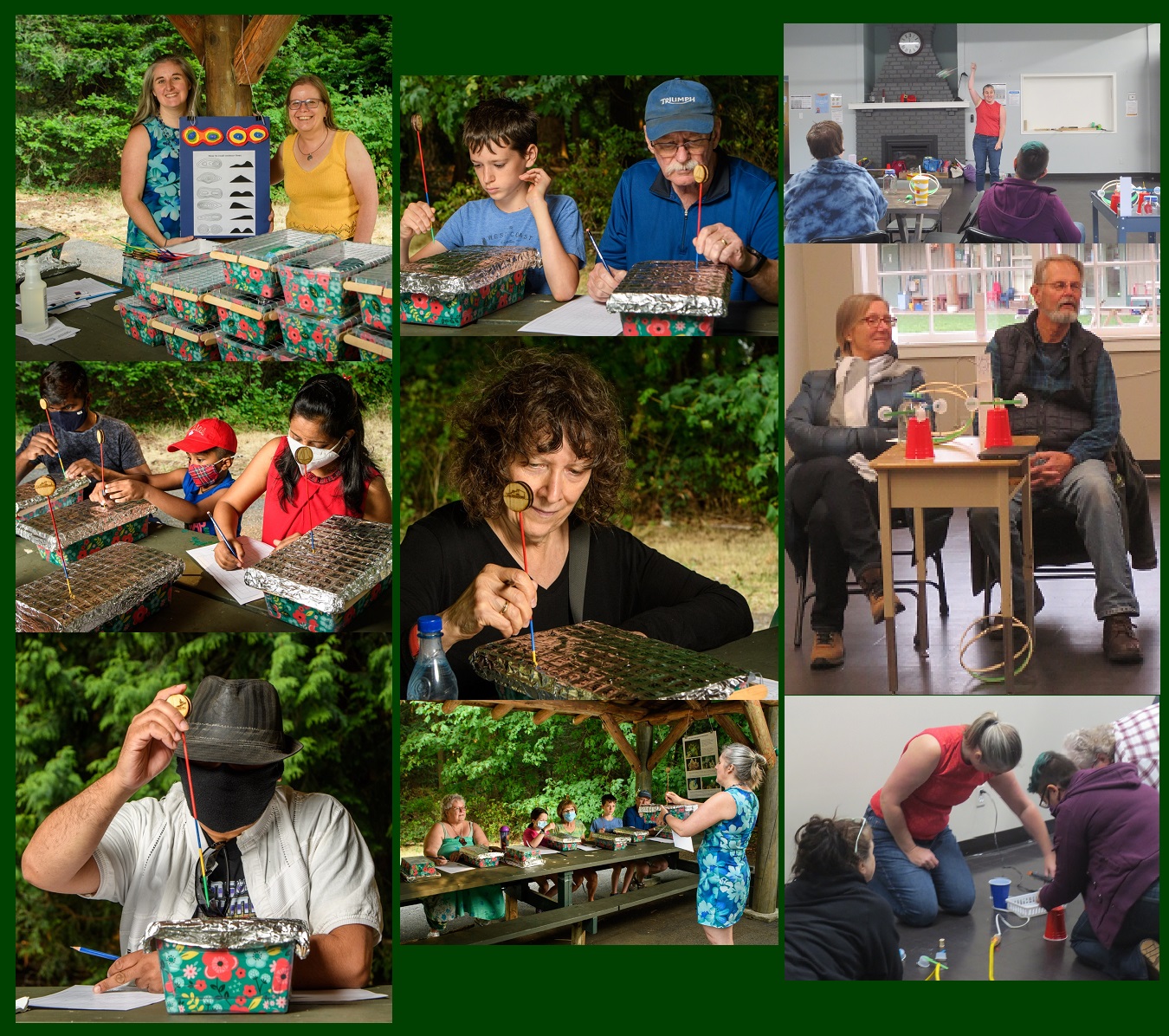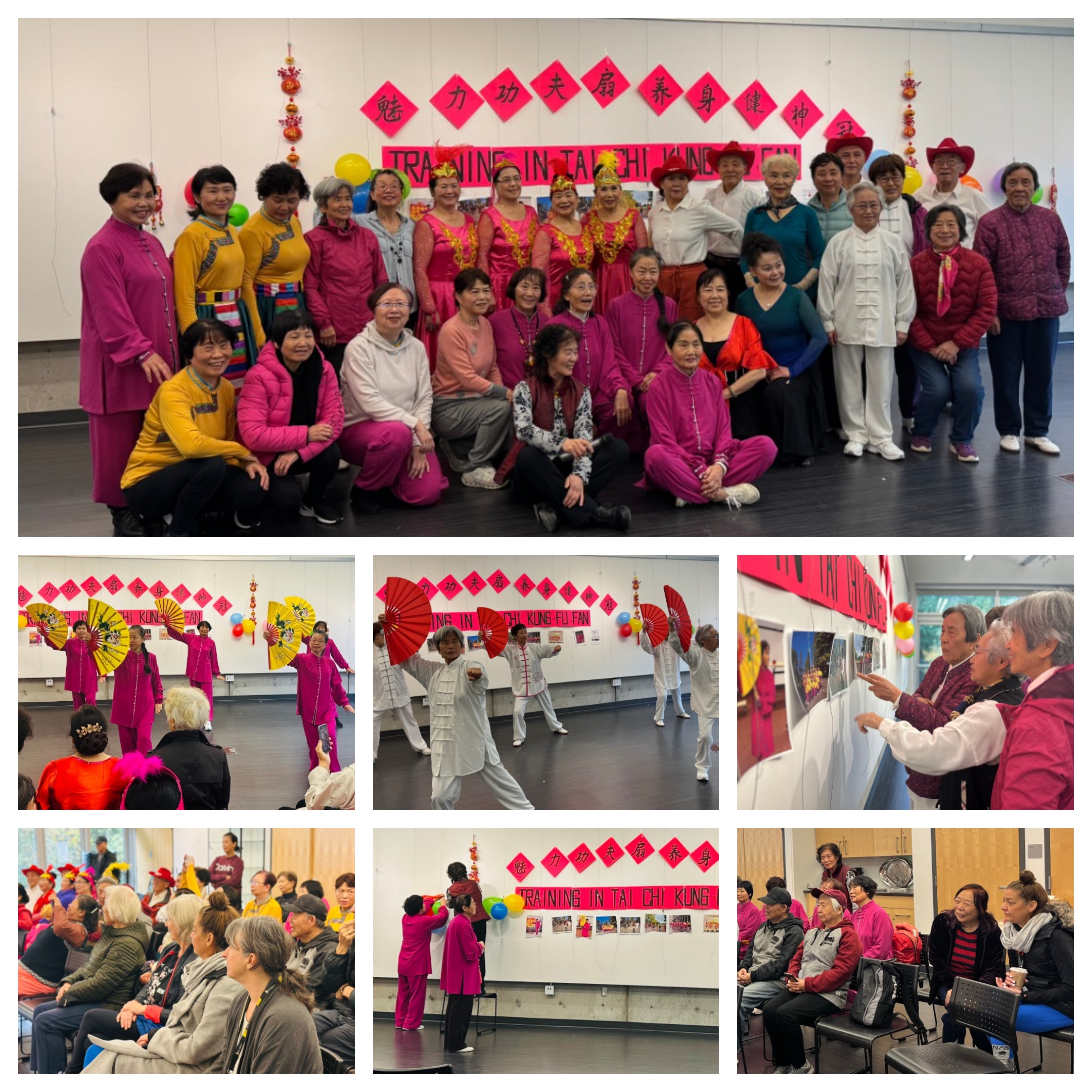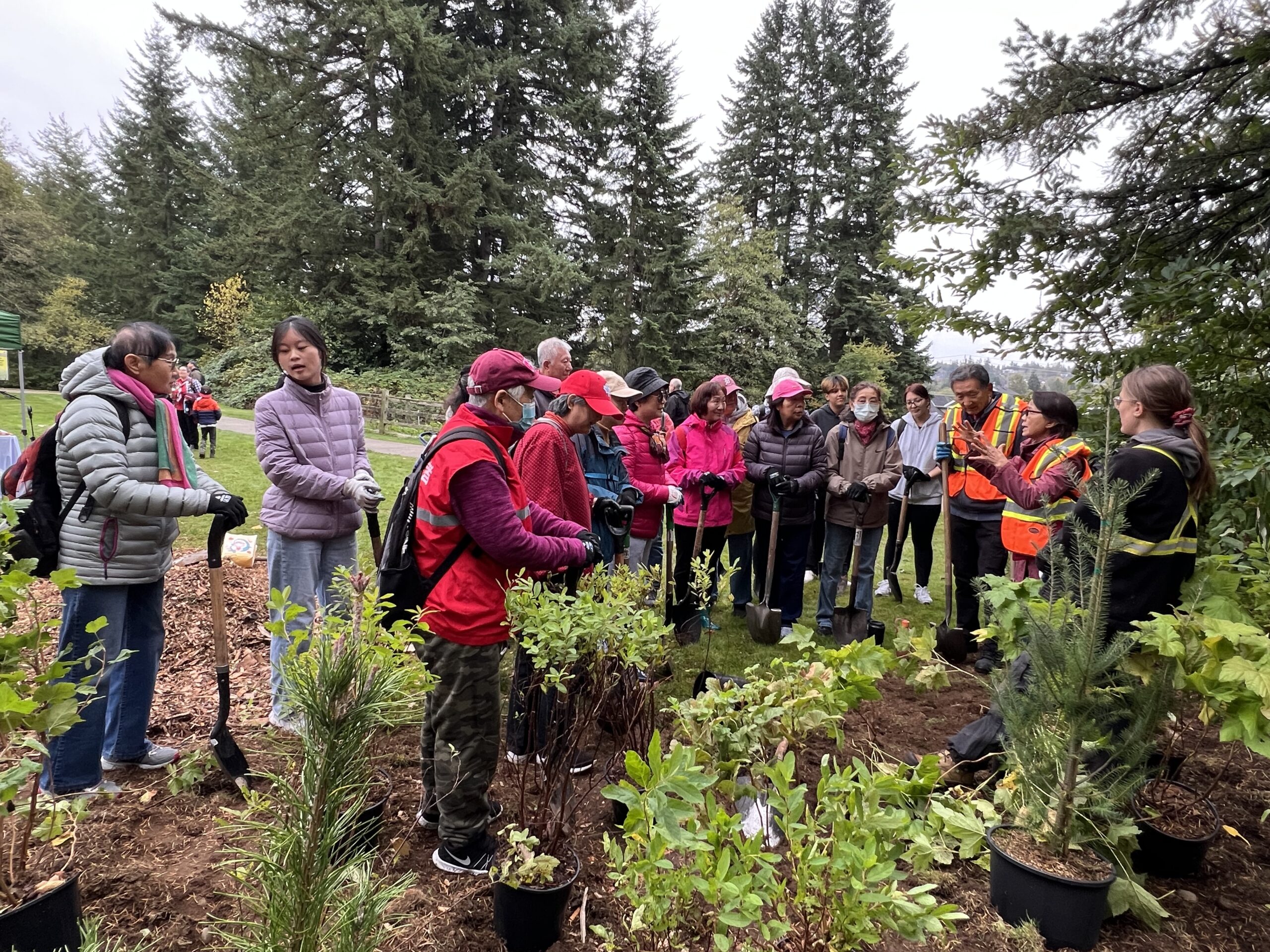Our Neighbourhood Small Grant enabled two exciting, hands-on, science workshops in South Surrey: Explore the Ocean Floor was held in Crescent Park in August and What’s the Weather? Was held at Alex House in November. People who attended these workshops enjoyed getting to know each other while engaging in our experiential learning activities and enjoying the public spaces.
Explore the Ocean Floor introduced participants to bathymetry and its role in the conservation of glass sponges of Howe Sound. We began with a discussion of the endangered Howe Sound sponges that are unique in the world – what they need, how we impact them, and why they’re so important. After a brief demonstration of how bathymetry works, we broke out our Howe Sound model. Each participant worked on a different section, using our analog bathymetry method to map the contours and inhabitants of their own section of Howe Sound. The wide range of aptitudes at this task that was new to everyone attending serendipitously enabled a rich discussion about how science is knowledge created by people, often from incomplete data, and constantly updated by further observations and measurements. We concluded by looking over each other’s results to understand the whole picture of Howe Sound and its glass sponge denizens. As we cleaned up, we discussed with the group the ways in which they, as non-scientists of all ages and backgrounds, could get involved in citizen science projects to support the study and conservation of Howe Sound’s glass sponge reefs. We were lucky to have the aptly-named Marlon Martinez taking professional photographs of our fun.
Our second workshop, What’s the Weather, was ironically postponed due to extreme weather events in September. On a rainy, blustery November day, we met at Alex House to make weather-measuring equipment and learn how to use it. We had a small group with a lot of laughs and really excellent questions and discussions. Just seven instruments measure all of the variables used to predict weather on Earth. We instructors talked through each of the seven – how each works and how the information it gives contributes to a larger view of the weather past, present and future. We briefly discussed the merits of the variations available, from the most crude to technologically advanced. After each of the three most complex of the seven, we guided participants through constructing their own to take home. As they waited for their turn with the tools we brought, we discussed how to calibrate and use each tool once they had it situated at home. They made barometers, anemometers, armillary spheres, and . We talked about how they could make and use the simpler four (rain gauges, thermometers, windsocks/weather vanes, and sling psychrometers) at home themselves. This way, each person could make complete weather predictions in their own home.
We are very grateful to NSG and Alex House for providing the funds and guidance to make these workshops possible. We had a great time!


